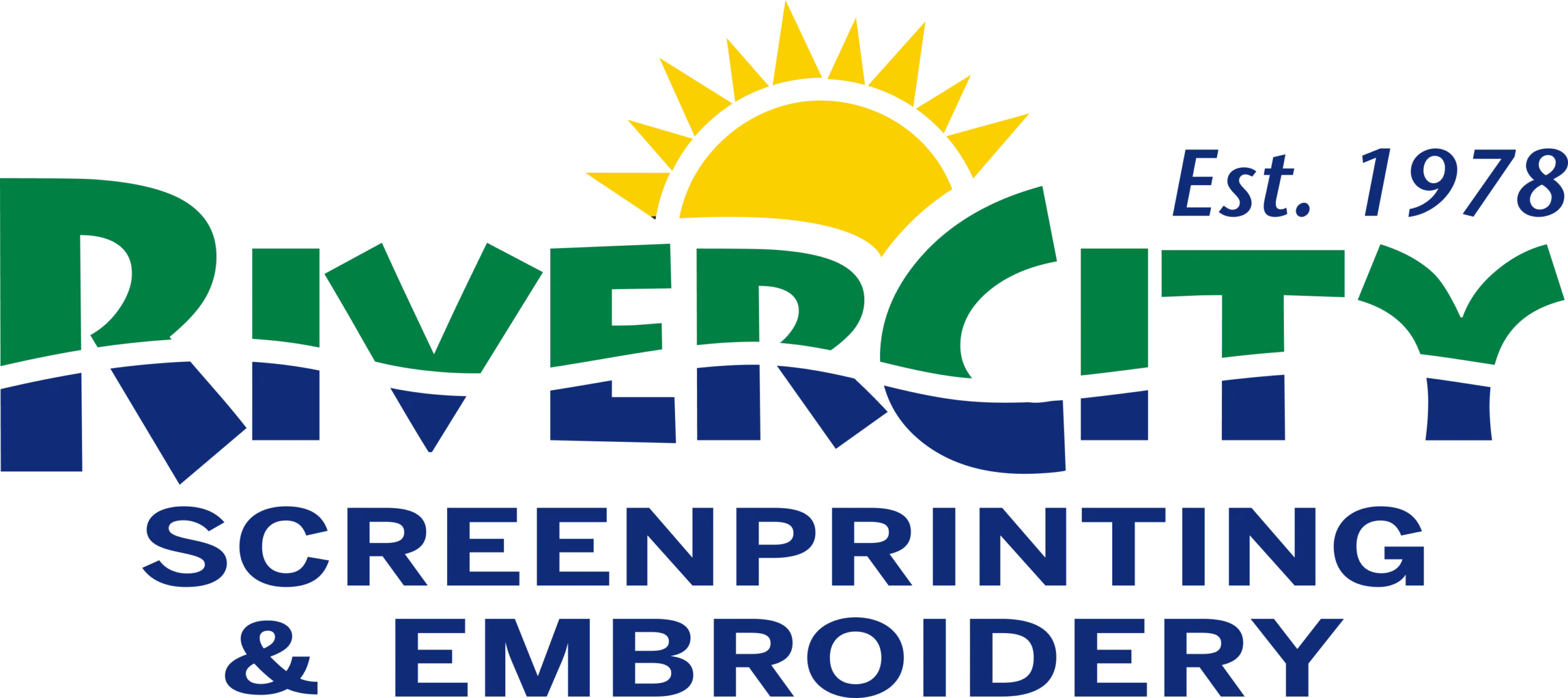Screen printing involves the work of transferring a design onto some product, whether that be a t-shirt, a tote bag, or something else. The ink is literally pushed through a pre-made stencil directly onto the product, then left to try. The stencil is also known as the screen, but there are other important terms for you to know. Being familiar with this process and the terms involved will help you to better understand and communicate with your screen printer next time you need to place an order.
Abrade
If the screen printing ink is beginning to come off of the product, you would use this term.
Automatic Press
An automatic press is a screen printing tool that utilizes machine technology to produce a larger number of printed products in a short amount of time. Most commercial screen printing companies use some variation of this.
Bleeding
If there is ink that has leaked onto an area where there should be none, it has bled.
Blend
Your printer is able to mix two colors of ink together to achieve a perfect color match, referred to as a blend.
Burning
Burning in screen printing is the process of “setting” the design onto the screen by exposing the emulsion to a powerful light source, creating a stencil for the ink to follow.
CMYK
CMYK is a color theory term that refers to the four primary colors that can be combined to make other colors: cyan, magenta, yellow, and black. While red, yellow and blue are used in paint pigments, CMYK is the standard when it comes to colored inks.
Color Composite
Many screen printers choose to create a color composite before pressing the design, which is a mock-up image of what the final product should look like.
Color Separation
Color separation is the task a printer needs to complete if they are using multiple colors in order to create different layers for printing. Each screen can only be used for one color, so a multi-color design needs to strategically incorporate several layers.
Emulsion
Though emulsion was mentioned earlier, to clarify, it is a chemical with photosensitive features that help in the creation of a stencil.
Flashing
At times a screen printer will need to engage in flashing, meaning that they will apply the same ink through the same stencil twice.
Flood
Flooding the ink is the process of placing it on the screen, then pushing it through to make the design.
Ink Well
There is only one side of the screen where the printer places the ink, and that side is the ink well.
Mesh Count
The screen is made of mesh, and the mesh count is how large the openings in the mesh are for the printer to push ink through.
Overprinting
If a printer needs to put one ink color on top of another, this is considered overprinting.
PMS
PSM as an abbreviation has many meanings, but in screen printing, it is the Pantone Matching System that helps to achieve color consistency from a design on a computer to a printed product or any other medium.
Run Off
A run off print is one that seems to extend over the product.
Squeegee
A squeegee is a necessary tool in screen printing in that it pushes the ink through the screen when pulled over it evenly.
Under Base
Many screen printers choose to create an under base first, which is a white layer of ink that helps in color integrity.
Viscosity
The final screen printing term to mention is viscosity which is how thick the ink is.
Final Thoughts
Now that you’re a bit more familiar with the terminology, you’ll have a better understanding of the screen printing process and what it takes to get your design from a computer onto a printed product. There may even be fewer mistakes on your part due to an increased understanding between you and your screen printer.

